How To Create a Boss Fight in D&D 5e
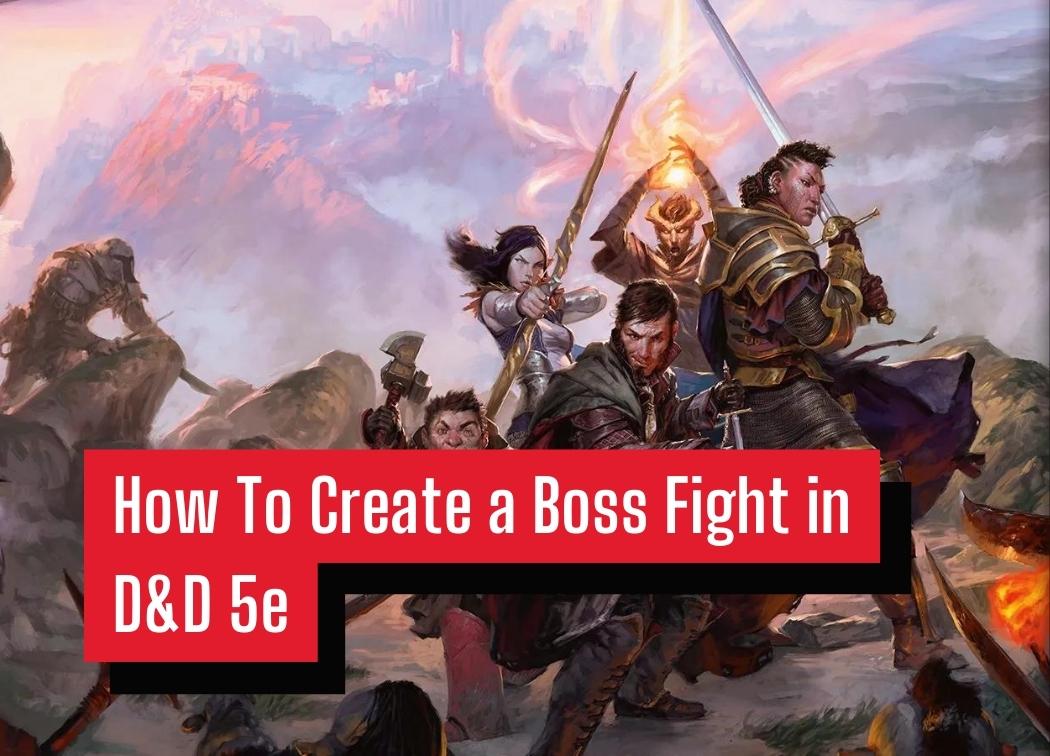
Boss fights are a huge part of gaming in general. It’s satisfying to finally butt-heads against the villain, and they’re some of the most memorable encounters out of any video game or RPG campaign.
No one remembers all the random fights against goblins. They remember the dramatic boss encounter that was tailor-made to satisfy the journey they went on to confront the boss.
D&D 5e is no exception to this rule. In fact, with some of the new mechanics introduced in 5e, I believe boss fights are even better than ever.
That being said, designing a boss fight as a new DM is intimidating. You want to create something that your players will enjoy, be challenged by, but still be able to defeat the boss.
Encounter design, in general, can be a lot to handle, but boss fights are where the stakes are actually at their lowest despite how much pressure you feel!
Dissecting Boss Fights
Essentially a boss fight is an encounter between the protagonists (the party) and a major antagonist (the boss). That’s all it is at its core.
Typically though, a boss fight consists of a few different elements. The most important of these is the boss. They should be intimidating, powerful, and ruthless against the party.
Other elements may include interesting and unique mechanics, an engaging setting, minions or henchmen, and a threat the party has to conquer. A boss fight can include some, none, or all of these elements, but each element should add to the fight in some way or another.
Why Have One?
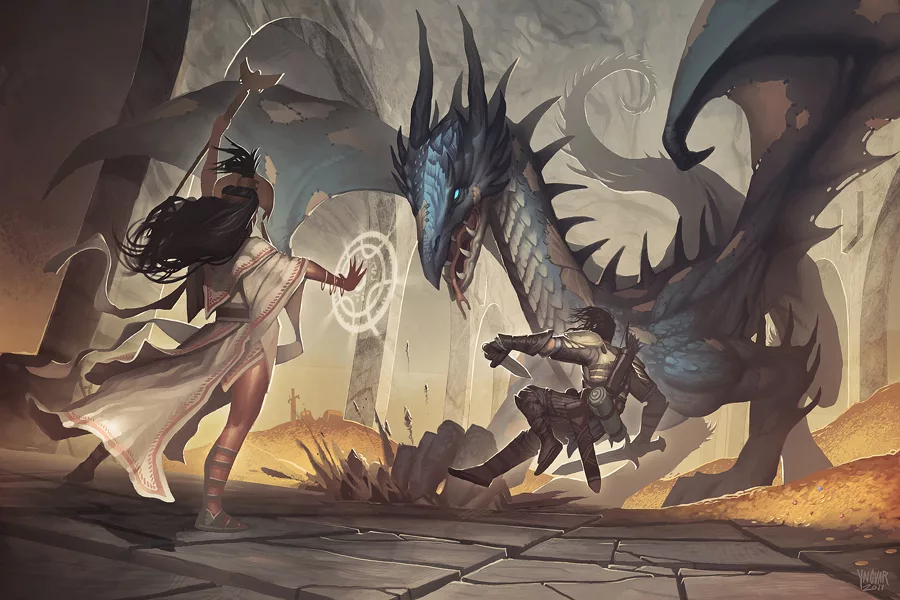
Your party will be going through a dungeon, story arc, or an entire campaign and picking apart the villains. Then, finally, they confront the villain in some fashion – consider this the climax to the story.
The climax is the most important part of any story. It’s where the build-up of the story comes to an all-time high and the protagonists have to confront whatever problem they are facing. In this case, it happens to be a fight with the villain of the story.
The party needs a reason to confront the villain in the first place, but most of the time this is solved before the boss fight ever breaks out. Something that the villain has done or is planning to do has drawn the party to the villain in the first place.
However, there may be additional circumstances for having this specific fight. For example, if the boss has captured an ally of the party and is planning to sacrifice them to some evil god or demon. The party is in a race to stop the ritual from happening and must confront the villain to do so.
When Should You Have One?
A boss fight is usually used as the last confrontation for the protagonists and antagonists – the climax. Use boss fights and their results to tie up the story and all of its loose ends (unless these become unresolved plot hooks).
I’d say generally the final confrontation of the antagonist happens at the end of the arc where the party storms the villain’s lair, or at the end of a fun dungeon crawl.
You may not have even planned for the party to fight at all. The party may have decided to strike well ahead of time. Fighting on the party’s terms may be a reason for the villain to try to escape, recuperate, and prepare itself for the true final boss fight.
The rule of thumb for a boss fight is that it should happen when it makes the most sense to progress the story of the game.
How Frequently Should Boss Fights Happen?
I tend to have a boss fight at the end of most dungeons and story arcs. This is a fairly high-frequency, but I tend to separate the traditional boss fight into two different categories, Mini-Boss Fights and Big Boss Fights.
Mini-Boss Fights are the ones that I pepper in for most of my dungeons and side quests. The villain or antagonist is a very minor nuisance in the grand scheme of the story and doesn’t deserve a huge send-off in the story.
Generally, these are just difficult fights and the creature has either some henchmen or some legendary actions. It’s a big fight, but it isn’t anything I put a ton of outside planning and effort into.
Big Boss Fights are encounters against major villains or antagonists that the party hates/has had a lot of interaction with. These encounters deserve a lot of flair, flavor, and should be unique compared to a regular encounter.
That being said, they also tend to be much less frequent, but they are usually way more memorable because of how much effort is poured into it and how invested the players are in the encounter.
Go all out! Make a secret lair that the boss uses in the big fight. Give your creature legendary actions and bring in a few underlings to even the odds.
Challenging, But Fair
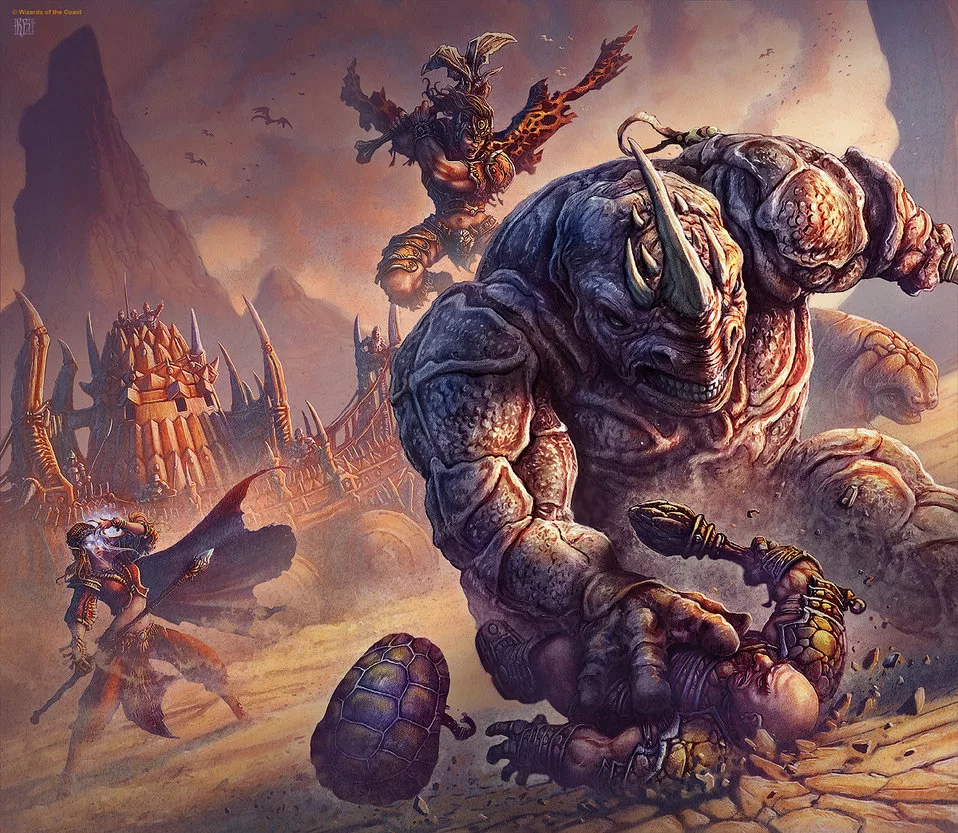
Difficult is one way to describe a “good” boss fight. Personally, though, I feel as though “challenging” is a much better adjective for a successful final encounter.
These fights and encounters should be challenging, but not completely impossible for the party to overcome. They may require some creativity and risk-taking from the party for them to succeed.
Force the party to overcome their weaknesses by having the big bad exploit them. Encourage and reward critical thinking. Essentially, you want the party to overcome this incredibly difficult obstacle you’ve put in their way.
Make sure that while the fight forces them into a corner and puts them against difficult odds, they can still succeed. If they screw up or the dice just aren’t in their favor that’s not your fault, but if the fight is mathematically impossible from the get-go your encounter is a wash.
Encounter Balance
Encounter balance is always a concern for me when designing an encounter. I’ve written an article before about how Kobold Fight Club can be used to help give you a great estimate as to how challenging an encounter is for your party.
However, there are always other variables that these types of calculators can’t take into account. The biggest variable that can screw up an estimation is by far, magical items.
While Xanathar’s Guide to Everything does give DMs an official magical item distribution per PC level, it’s not followed to the letter by the community. Plus, there’s a lot of variance anyways. A group where every PC has a magical weapon is probably of a different power level than those that don’t.
Playstyle and how seasoned the players are also can skew the difficulty of encounters. More experienced players know more about D&D and can make better tactical decisions. They may be able to hit above their respective belt in terms of CR-appropriate creatures.
After a few sessions, you should be able to figure out what types of encounters are appropriate for each level of difficulty. I still use Kobold Fight Club for my campaign, but I tend to build Hard difficulty encounters for Medium ones due to my players’ experience with D&D 5e plus the higher-than-average magical items I’ve given them.
Boss fights are one of the few times where if you overcompensate and make an encounter too difficult it’s not necessarily a bad thing. The players are expecting the encounter to be extremely difficult already.
Boss Battles for Short-Term Campaigns
Boss encounters in a short-term campaign or one-shot tend to be easier to balance than one in a long-term campaign. You know what the baseline characters will have in terms of power and magical items so the estimations from CR calculations will be more accurate because of this.
You’ll also know how many encounters per day the party will be up against which will make encounter balance easier from that perspective as well. I’ve written an entire article on encounters before that goes into a bit more detail on this subject.
Essentially, you have more control in short-term campaigns, one-shots, and adventure modules whereas long-term campaigns will have much more room for magical item distribution and homebrewing which makes it initially a bit more difficult to get a hold of encounter balance in general.
Winning Doesn’t Always Mean Killing
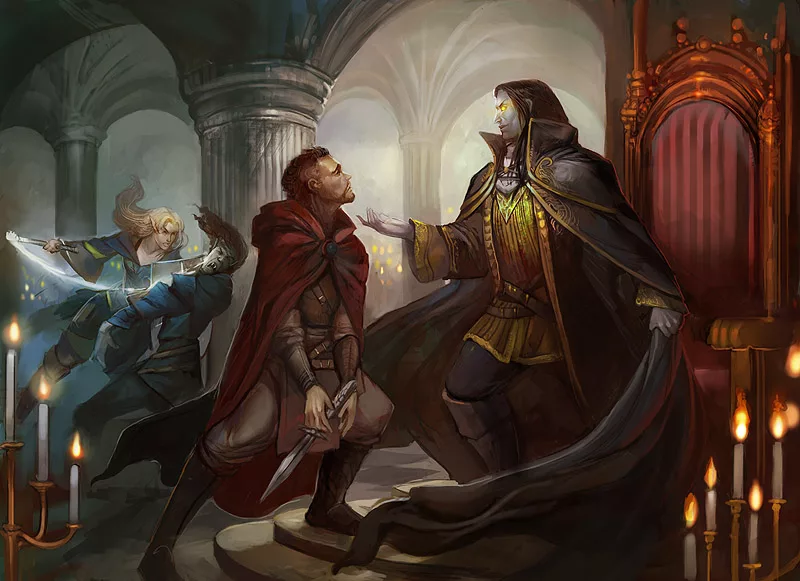
In short, you should always have a win condition for any encounter in D&D 5e. Boss fights are no exception they’re more of the gold standard for win conditions.
Boss fight win conditions should be extremely satisfying to fulfill. Whether that’s saving a captured NPC or PC from the villain or slaying the dragon it should feel epic to the players to complete this task.
Winning the fight and besting the villain does not necessarily mean that the party has to kill the villain though. They may be swinging at something or someone much more powerful than they are.
In cases where the party is outmatched create an encounter where the party has to survive the villain’s onslaught while they dismantle part of the evil plans of the villain. Build a fight around the party rescuing prisoners or disrupting a supply line.
These victories may seem small at first, but they build on each other and create a deeper story. It’s also a way to introduce how powerful the villain is without forcing the party into a full-out battle against them.
Besides, You can always go the superhero route where the party is simply trying to apprehend their nemesis and throw them in jail.
Evening-Out the Action Economy
I’ve said it before and I’ll say it again. The biggest problem with D&D 5e encounter creation is the action economy. PCs, in general, can perform more actions per round of combat than the majority of creatures. Few creatures can make regular use of bonus actions and reactions like PCs can.
This means that when the party outnumbers the boss in a boss fight your big bad villain is at a huge disadvantage. Even if they can practically one-shot a PC they’re still not going to be much of a threat unless luck is on your side.
Thankfully though, there are special types of actions that are reserved primarily for legendary creatures such as those you’d fight in a boss battle.
Legendary Actions
Legendary actions are special actions that can be used outside of the creature’s turn. They have 3 uses of these actions and have a list of different actions they can use. Some legendary actions are more powerful than others and will cost 2 or 3 uses for a single action.
Legendary actions must be taken after another creature’s turn. They cannot be taken during the legendary creature’s turn at all.
Once all 3 uses are used up in a round the creature must wait until their next turn where they will regain all expended uses.
This is a way to give a creature 1-3 extra actions per round to help balance out the action economy. This makes a creature worth 1.5-2x as much as a regular creature in terms of the action economy.
Legendary actions are fun. They should have a lot of flair and be unique. They’re also an excellent way to add some flavor to your boss creature.
Legendary actions can be anything you want. They can be crowd control abilities, attacks, or even utility such as extra movement. Be creative and find ways to bolster your boss monster against the mighty heroes.
I’ve written about legendary actions and lair actions in much more detail here. Feel free to read that to learn more about both of these concepts!
Lair Actions
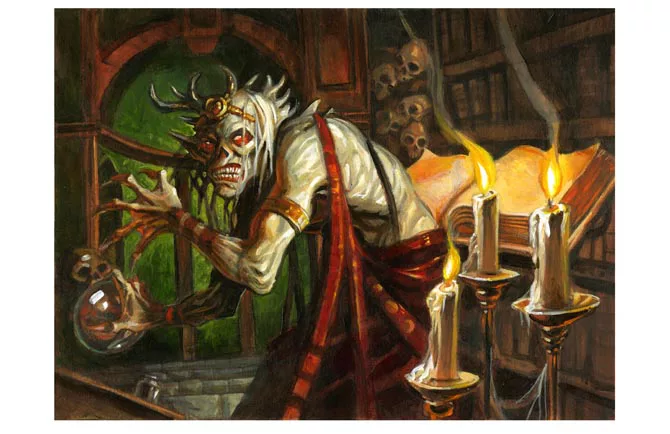
Lair actions are similar to legendary actions, except they have some more restrictions. These are typically limited to extremely powerful creatures. Creatures that have their lair or domain.
As far as homebrewing is concerned don’t worry about this restriction. Your goblin boss can have lair actions if he’s in his cave just like an ancient red dragon can have one in their cave. Fair is fair!
Essentially lair actions can be taken at the top of the round of combat. If the creature is in their lair they gain some sort of benefit. This can be a passive buff to the creature, a damaging attack against the party, or anything in-between.
Typically a creature will have a shortlist of 2-3 lair actions they can take. Once a lair action is taken it cannot be used on the following turn. This is to prevent a creature from taking its most-optimal choice every single round.
Lair actions give a creature a bit of extra power and help a bit with evening-out the action economy imbalance between a boss creature and the party. However, they also serve as a reward to the party. If they can draw a creature out of their lair, they’re less powerful and easier to subdue!
Minions
Legendary actions and lair actions can only do so much for the action economy. At the end of the day, the boss monster still will only have about 1.5 – 2 PCs worth of action economy with the additional actions.
That’s why I like to advocate the use of minions or henchmen. Let’s face it, the villain didn’t become an evil mastermind without an army of underlings. Therefore, why should they have to fight a party of 5 by themselves?
Give your dragon some kobolds, half-dragons, or guard drakes to help even the odds against the party. Your evil wizard probably has a group of thugs that guard him. Turn a 1 vs. 5 situation into a 5 vs. 5 situation and the encounter will be both fairer and more interesting for both sides of the table.
Another option is to use 2 semi-powerful creatures instead of 1 powerful creature in a boss encounter. This splits up the action economy, but still keeps the challenging feeling of the fight.
Legendary Resistance
Not to be confused with legendary actions, Legendary Resistance is a trait that can be used by a creature 3 times per day. If the creature fails a Saving Throw they can use 1 use of Legendary Resistance and instead pass that Saving Throw.
This is a completely passive trait and works wonders for boss fights. Stunning Strike and other such crowd control abilities are the bane of every boss fight.
It makes having a single creature fight against a party very difficult if not impossible to make interesting. A creature losing their turn and the party wailing on them at advantage makes for a joke of an encounter quickly. The boss being capable of shrugging the crowd control off is necessary.
This may feel like a cheap maneuver. It “wastes” a player’s action economy and reverses some progress that they’ve accomplished. However, the party only has to force the creature to do this 3 times until they can no longer use it during the encounter.
If you’re thinking of doing a 1 vs. 5 type of encounter your creature needs Legendary Resistance for it to be a threat at the higher levels. The more access to CC the party has the less threatening these encounters are.
Example Boss Fight
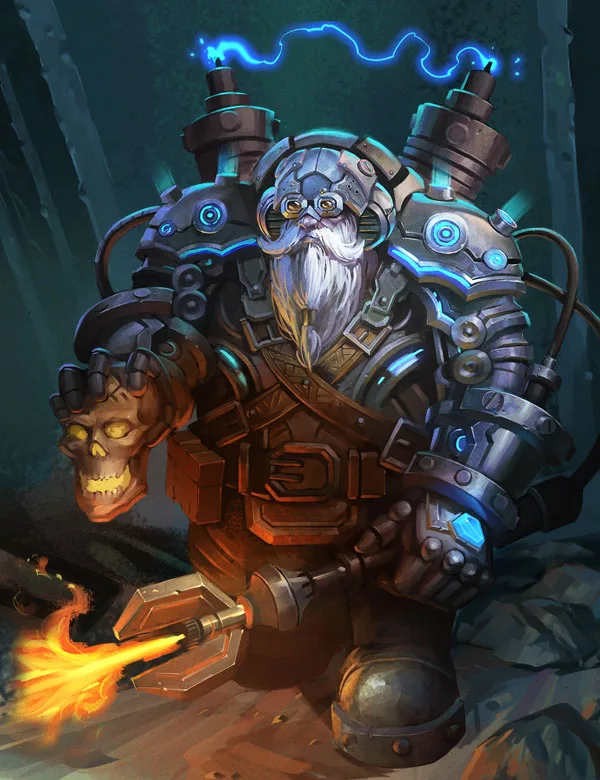
It’s hard to make general advice and expect it to sink in. Vague examples aren’t useful to everyone, so with that being said here’s a boss fight that I designed!
I’ve made quite a few boss fights in the past, but my favorite (and most successful) to date has to have been Longbeard in my latest homebrew campaign. Longbeard was a dwarf that mechanically modified his body to the point that he was more machine than dwarf.
Lore and Backstory
He was a ruthless businessman and destabilized the economy of an entire city by creating mechanical & magical golems that mined more efficiently than the workers of the mining town. The party fought him head-on in his mansion where the fight quickly evolved into an all-out brawl in Longbeard’s lair.
The party had already gained some notoriety in the world due to their heroic exploits so Longbeard had his eyes trained on them when they entered “his” city. He attempted to chum up with the party and invite them to dinner.
The party had already spoken with others in the city who were very anti-Longbeard due to him destroying their livelihood with his inventions. Because of this the party cautiously accepted the invitation but noticed that he was a bit more than an entrepreneur.
Throughout their adventures within the city, the party learned more of Longbeard’s ulterior motives and confronted him with the help of newfound allies.
Longbeard proved to be a surprisingly formidable foe with a mechanical body full of high-tech weapons and tools. His lair was filled with mechanical arms and conveyor belts that would prove tricky to maneuver through should the party try to.
Statblock
Learn more about the program I use to create monsters in this post!
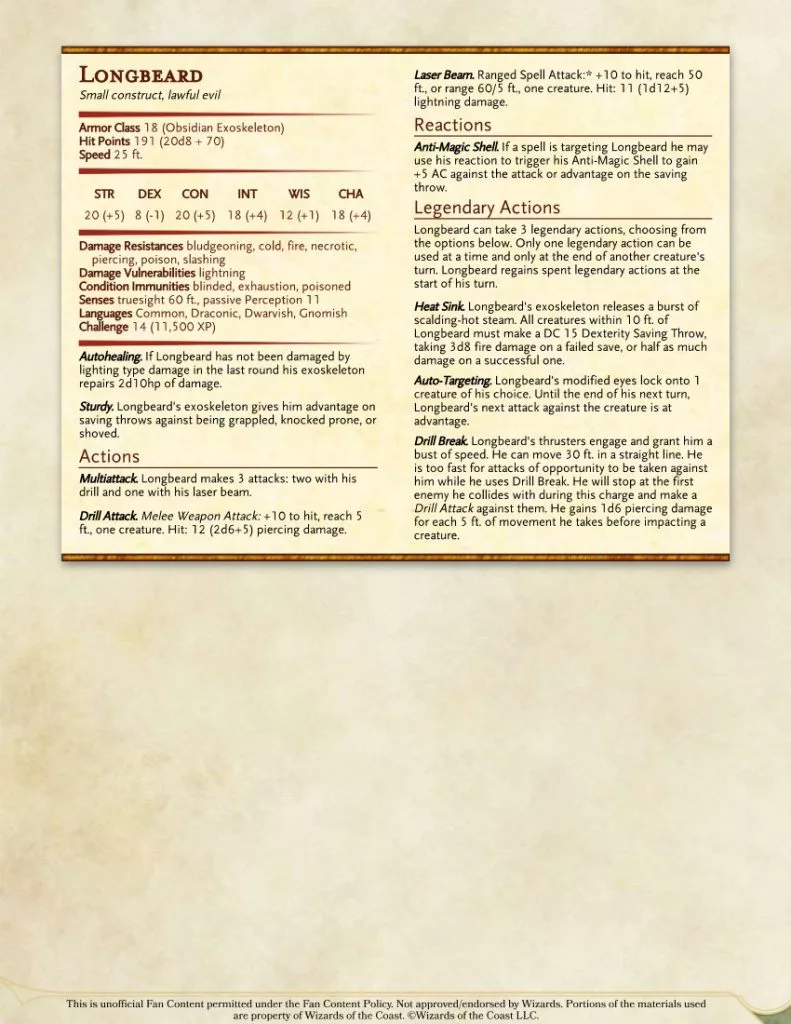
Longbeard is a bit weak in the defenses department despite having an on-demand Shield spell and a ton of resistances. This was an intended design decision. The party assumed that this magical, metallic, golem would be a hard egg to crack.
Instead, he was a surprisingly mobile offensive powerhouse. With ranged and melee weapon attacks and some nasty AoE fire damage, he had all of his respective bases covered for him.
I decided to forego Legendary Resistance for Longbeard due to his stats being naturally high, his condition immunities, Anti-Magic Shell giving him advantage on spell saves, and Sturdy giving him passive advantage on 3 different types of CC conditions. It seemed a bit over-the-top to give him 3 free saving throws on top of all that.
Thoughts and Design Notes
Feel free to use Longbeard in your games. There are quite a few things that I would change should I have made him again, but I think overall he made for a challenging boss fight for my party of 5 level 8 characters.
The group consisted of 3 melee characters and 2 ranged so I wanted him to be both mobile enough to pose a threat to the ranged characters, but be able to threaten the 3 melee PCs if they attempted to gang up on him. Both Heat Sink and Drill Break worked very well in their respective niches.
The cranes and conveyor belts were a good idea, but the party rogue was able to avoid them completely and complete the objective during the fight.
The rest of the party didn’t even need to get that far and were able to corral Longbeard in the section before the obstacles. Swapping these out for lair actions would’ve been a better move in my opinion.
The party also didn’t ever learn about the Longbeard and his golems’ vulnerability to lightning damage. I feel as if the encounter would’ve been considerably easier if they had found out this information.
Conclusions
Like them or not, boss fights have become a much more integral part of D&D and TTRPGs. I think it has to do with tabletop games becoming more popular in general. This trend feels like a carry-over from video games if anything.
In D&D 5e this is more than welcome. The system was designed with these types of epic encounters in mind. Creatures having additional, powerful actions and lairs that bolster their abilities are excellent ways of giving your players that “final boss” feel of the campaign or story arc.
Boss fights are some of the most fun I’ve had designing encounters in this edition. They are surprisingly not very stressful to design.
Your players expect a tough fight already. So long as the boss isn’t broken or unkillable they’re not going to complain.
Go wild and homebrew your boss fights. Tweak creatures in the official books by adding some lair actions and legendary actions to them. Be creative and it’ll be worth all the effort you put into it come game day!
